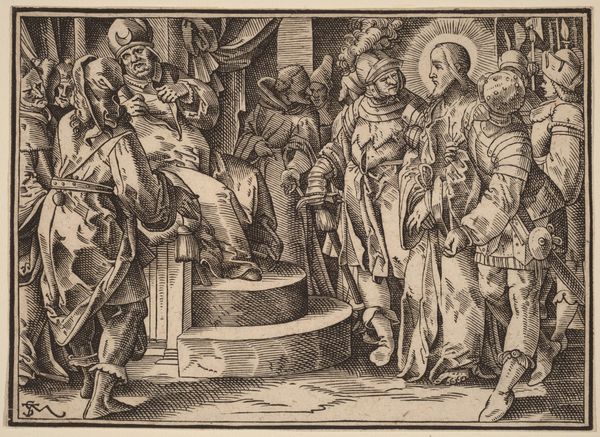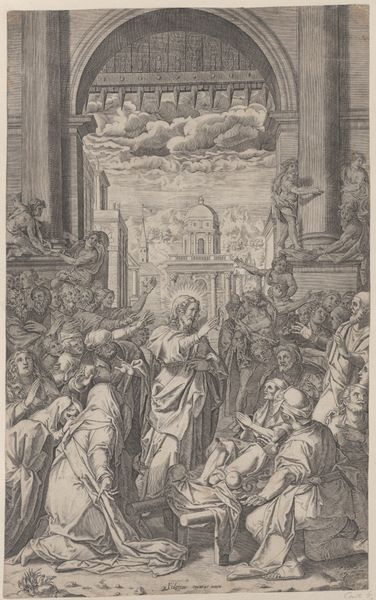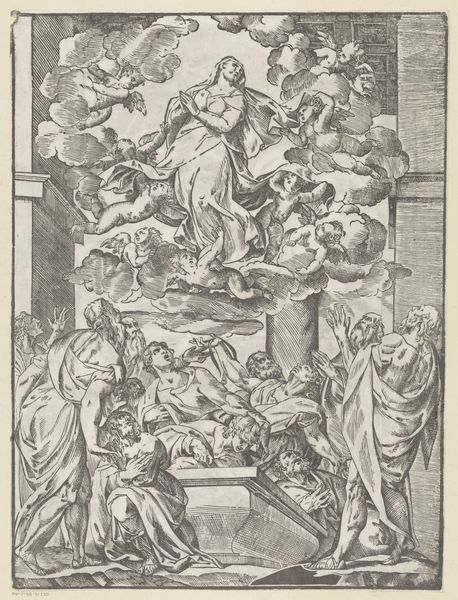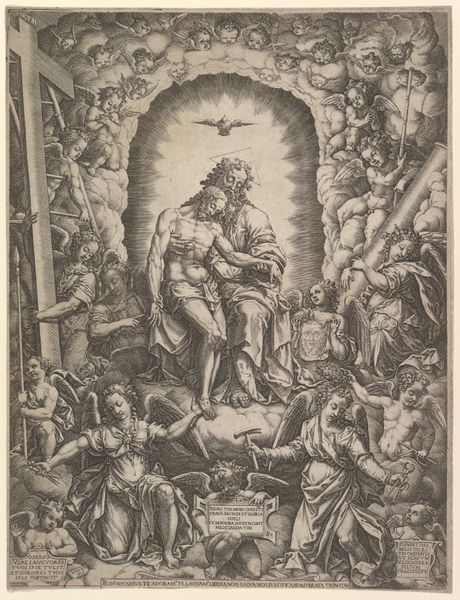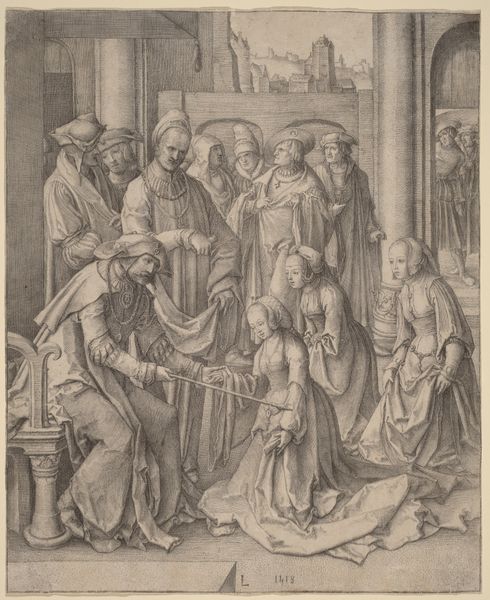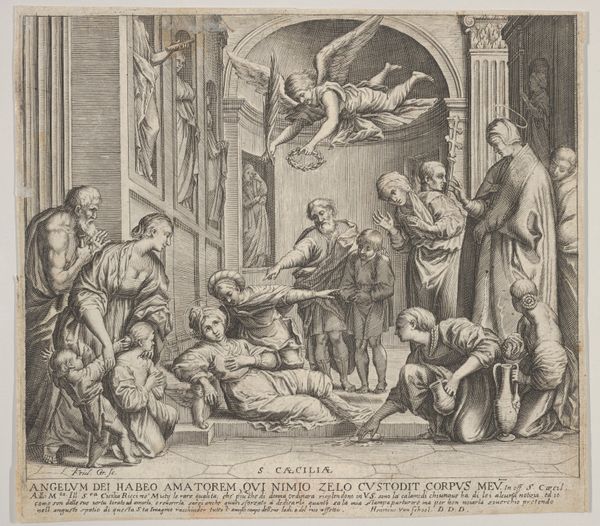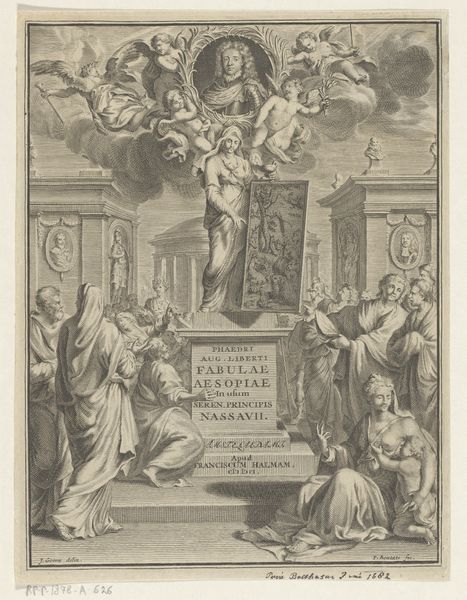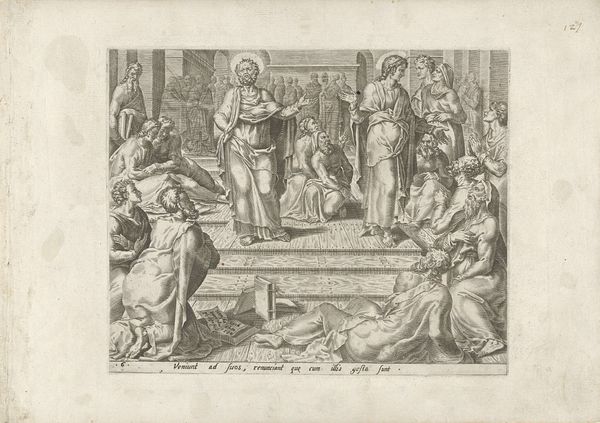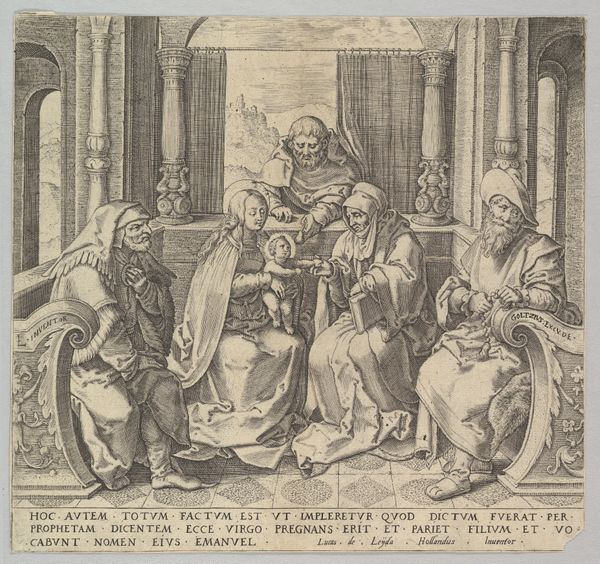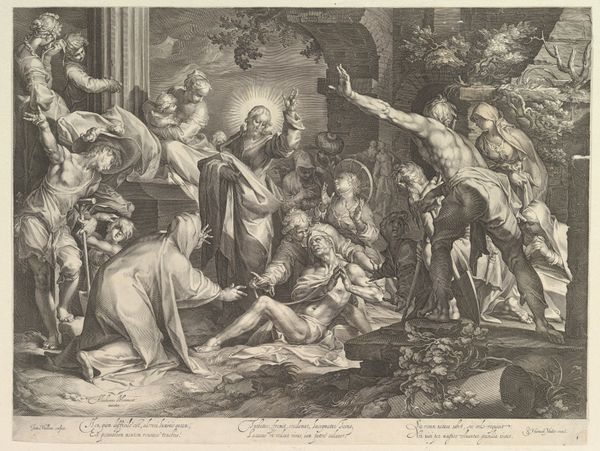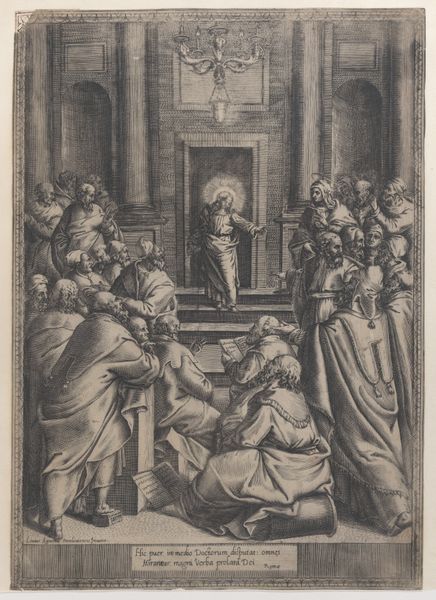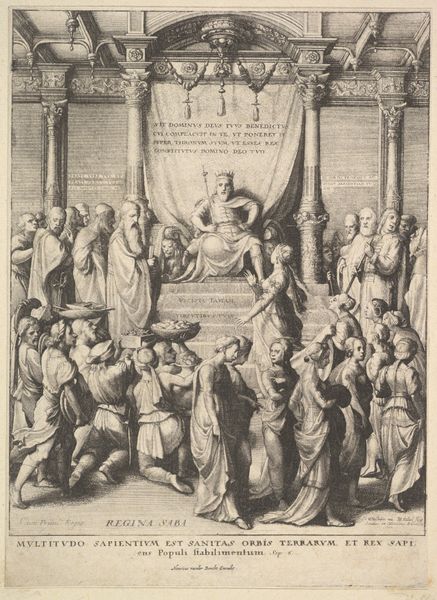
Frontispiece with oval portrait of Raphael, with three allegorical figures of the Arts supporting the tablet at center 1675
0:00
0:00
drawing, print, engraving
#
portrait
#
drawing
#
allegory
#
baroque
#
pen drawing
# print
#
history-painting
#
academic-art
#
engraving
Dimensions: Sheet (Trimmed): 12 1/4 × 15 1/4 in. (31.1 × 38.8 cm)
Copyright: Public Domain
Editor: This engraving, titled "Frontispiece with oval portrait of Raphael," was created around 1675 by Pietro Aquila and it's currently housed at The Met. It features an allegorical scene with figures supporting a portrait. The density of the composition is striking! I'm interested in your interpretation of it. What statements do you think it’s trying to make? Curator: Given the period, this print tells us a great deal about the institution of art and its perception at the time. Look at how Raphael is framed - literally! It’s an intentional act of enshrining his legacy. Do you see how the allegorical figures of the Arts are *supporting* the tablet and his portrait? Editor: Yes, it seems like a celebration of Raphael, solidifying his place in art history. But what about the architectural setting? Is that also significant? Curator: Absolutely! Notice the almost stage-like setting, reminiscent of a proscenium. This image performs its reverence, enacting a formal declaration of Raphael’s artistic importance. The setting lends legitimacy and reinforces the concept of a canon. Where do you think artists at this time wanted to be within that artistic cannon? Editor: To be recognized, respected, and ideally, emulated, right? Being part of that lineage would give their work more value and longevity. Curator: Precisely. So, this "Frontispiece" wasn't simply about honoring Raphael; it actively worked to shape artistic values and expectations. What do you make of its existence as a *print*? Editor: Well, engravings made art more accessible. It's not just for wealthy patrons; it helps to broadcast and solidify Raphael’s reputation across a broader audience. I see how the socio-political context shapes our understanding of the work. Thanks! Curator: Indeed. Reflecting on art this way encourages us to consider whose voices are amplified and whose are marginalized within artistic traditions, something we should always be questioning.
Comments
No comments
Be the first to comment and join the conversation on the ultimate creative platform.
